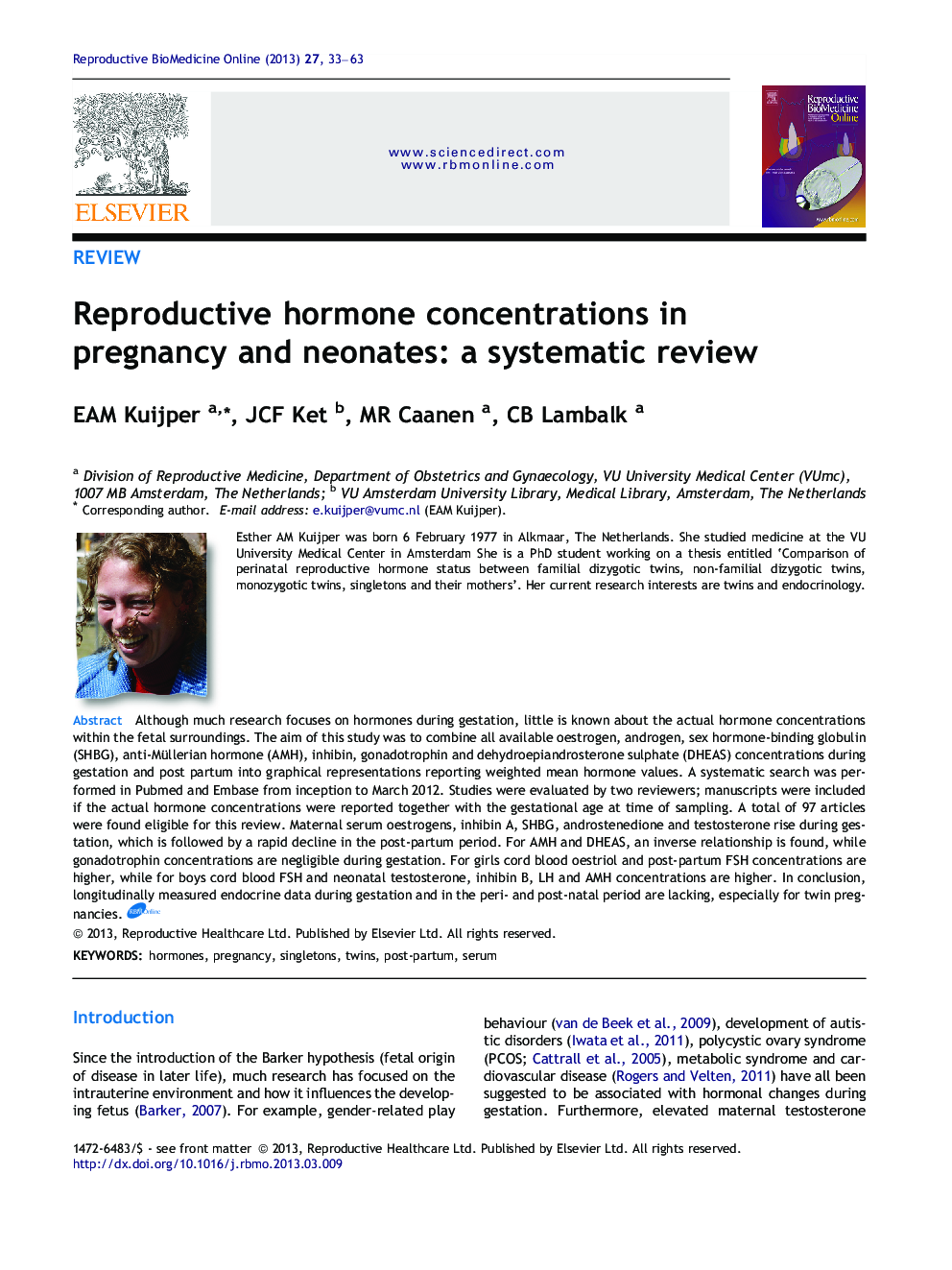| Article ID | Journal | Published Year | Pages | File Type |
|---|---|---|---|---|
| 3970267 | Reproductive BioMedicine Online | 2013 | 31 Pages |
Although much research focuses on hormones during gestation, little is known about the actual hormone concentrations within the fetal surroundings. The aim of this study was to combine all available oestrogen, androgen, sex hormone-binding globulin (SHBG), anti-Müllerian hormone (AMH), inhibin, gonadotrophin and dehydroepiandrosterone sulphate (DHEAS) concentrations during gestation and post partum into graphical representations reporting weighted mean hormone values. A systematic search was performed in Pubmed and Embase from inception to March 2012. Studies were evaluated by two reviewers; manuscripts were included if the actual hormone concentrations were reported together with the gestational age at time of sampling. A total of 97 articles were found eligible for this review. Maternal serum oestrogens, inhibin A, SHBG, androstenedione and testosterone rise during gestation, which is followed by a rapid decline in the post-partum period. For AMH and DHEAS, an inverse relationship is found, while gonadotrophin concentrations are negligible during gestation. For girls cord blood oestriol and post-partum FSH concentrations are higher, while for boys cord blood FSH and neonatal testosterone, inhibin B, LH and AMH concentrations are higher. In conclusion, longitudinally measured endocrine data during gestation and in the peri- and post-natal period are lacking, especially for twin pregnancies.Although much research focuses on hormones during pregnancy and how they influence the developing fetus, little is known about the actual hormone concentrations within these fetal surroundings. The aim of this study was to combine all gestational and peri-partum hormone concentrations into graphical representations that could be used as reference. A systematic literature search was performed and a total of 97 articles were found eligible for this review. Data were converted to the same unit and weighted means were used to construct figures demonstrating changing hormone concentrations, in maternal (serum, amniotic fluid, saliva and urine) and fetal samples (serum). Maternal serum oestrogens (oestrone, oestradiol, oestriol), inhibin A, sex hormone-binding globulin, androstenedione and testosterone rise during gestation and peak values were reported at birth, which is followed by a rapid decline in the post-partum period. For anti-Müllerian hormone (AMH) and dehydroepiandrosterone sulphate, an inverse relationship is found, while gonadotrophin concentrations are negligible during gestation. In girls umbilical cord blood oestriol and FSH in the post-partum period are higher, while for boys cord blood FSH and neonatal testosterone, inhibin B, LH and AMH concentrations are higher. We conclude that longitudinally measured endocrine data during gestation and in the peri- and post-natal period are scarce, especially in twins.
